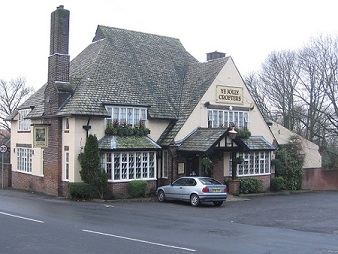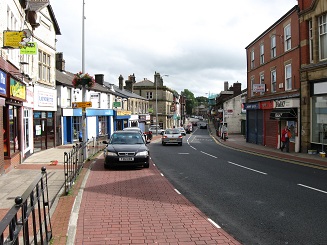The Pubs of Horwich
| Welcome and thanks for visiting this recently (Nov 2014) revised site. The traditional pub is a dying breed. This site is an appreciation of the pubs of Horwich past and present, but mainly present. Enjoy them while they are still here. To help you some have a montage of photographs. Try clicking on the image of your local! The Public Hall is the oldest building I know in the village made of brick and it was completed in 1878. The oldest stone building I know was the railway station which opened in 1870. Sadly it was demolished around 1980. Given that bricks were considerably cheaper than stone the change presumably was pretty much instantaneous. So here is a means of dating buildings (pubs). It must be borne in mind that several pubs replaced older structures on the same sites. And just to make everything more interesting not all the pubs were built as such. Another oddity is the frequency of pubs along Lee Lane and Church Street and their paucity along Chorley New Road. Lee lane has it origins in a turnpike (toll road) dating from 1763. Chorley New Road was only opened in 1829. I am aware there are other places in the village where good company and beer (or your choice of alcohol) can be enjoyed but these do not form part of this treatise. |
| Alphabetically the first was the Bay Horse-it became a wine bar called the Courtyard. Then it became something called the White Tiger. | |||
| The Bee Hive Inn is on Chorley New Road. It used to be just a pub back in the 1800s, surrounded mainly by farmland. Many houses were built alongside and behind it in the early and mid 1900s (Brazley and Claypool). Worse was to follow, in the 1960s the M61 was built and the access point for Horwich was a new roundabout slap bang outside. The landlord and the brewery could hardly have wished for more. But in the 1990s Bolton Wanderers decided to abandon Burnden Park and move to a site between the Bee Hive and the M61. The name of the pub is believed to go back to the days when collecting honey was big business in Horwich and the thirsty workers needed refreshment. | 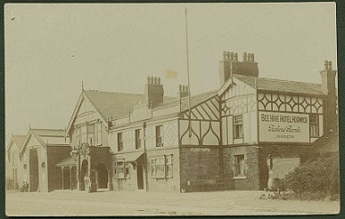 | ||
| The Black Bull was built on church land in the late 18th century. It had the advantage of course of the connections with the church, but from around 1900 it had the disadvantage of being across the road from the Police Station. One interesting feature is the northern aspect where two of the upper storey windows have been blanked. Presumably dating to the times when windows were taxable and therefore proof that tax avoidance is not a new phenomenon. In recent times It has been changed to an Italian themed restaurant and the name has been translated appropriately. It has its own website. | |||
| The Blundell Arms is in Horwich, on Chorley Old Road, a few metres away from Bolton. It used to be called the Horwich Moor Gate Inn and was handily situated to refresh weary travellers who had toiled up the hill out of Horwich on their way to Bolton or travellers from Bolton who were about to visit Horwich. The structure which is Grade II listed, must be one of the oldest in the area and is known to be at least 400 years old. A section of wattle and daub construction is framed-it is on the way to the restrooms. It was the site in 1838 for the inquest into of the murder commemorated by the Scotsman's Stump on Winter Hill. It is another pub to feature on the web. | 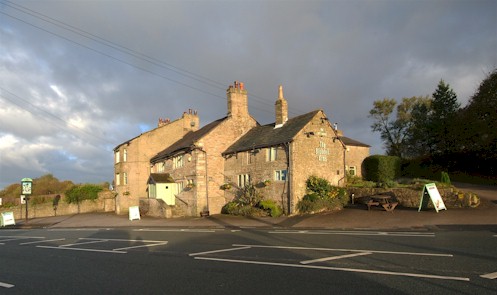 | ||
| The Bowling Green is to the west of the centre of Horwich (but not too far away). In years gone by it presumably catered for bowlers but that activity is long gone. As the Victorian era drew to a close bowling was a very popular sport and amongst other Horwich pubs the Saddle, Greenwood and Blundell arms all once boasted greens. The Squirrel although just outside the town also had a bowling green. Many years ago top bowlers were revered, almost like some footballers are today. It is another local to have a website. | |||
| Next alphabetically is the Bridge Hotel. It is just below the bridge over Pearl Brook on Church Street. The present building replaced an older hostelry on the site but was only erected on the condition that the licences of two existing hostelries be merged. Since the pre existing building had a licence the first part was easy. The second licence was more problematic but eventually the Sportsman's Arms on Georges Lane was persuaded to close and sacrifice its licence. At the end of the Crimean war the (original) Bridge and the Sportsman's Arms were two out of 12 pubs in Horwich-and the only two to entertain customers with music. Between the hotel and the bridge was a smithy. Originally, of course for horses, later for general smithing. A reminder of the days when the horse was the main means of transport. No doubt the motive power could be attended to while passengers took refreshments. It was the service station of the 19th century. |  | ||
| Then we come to the Ale House, formerly the Brown Cow, which is further up Church Street from what used to be the Black Bull. After a couple of different management styles in the new millennium it has been transformed into a fantastic pub and congratulations are due to the Bank Top Team who have made it into everything a pub should be. It was one of the hostelries used for the celebrations after the laying of the foundation stone for the Church (on May 21, 1830) no doubt establishing a trend for those who have happily combined activities ever since. In the 1800s most of the houses around were used by weavers so it would have been a useful meeting place for the necessary transactions and refreshment of the workers. Just down Church Street, the building on the corner of Wood Street was a fish and chip shop in the 1950s and 60s. These days there is a sandwich shop a couple of doors up the hill. | |||
| The Original Bay Horse is a hundred metres or so up Lee Lane, on the same side of the road as the Crown. At one time the building was used for weaving. Upto the 1930s beer was brewed on the premises. Recently taken over by a local personality, changes are promised | 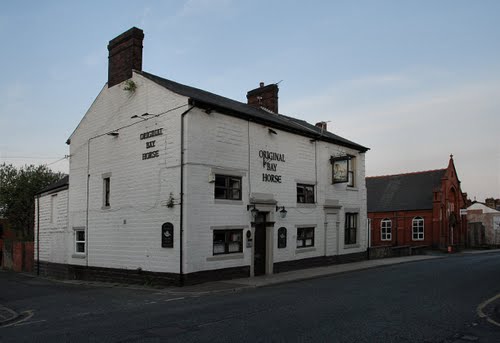 | ||
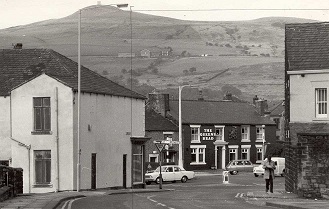 | The Queens Head is across Lee Lane (or maybe Scholes Bank) from the Crown Hotel. Sadly it seems to have closed. | ||
| The Toll Bar Inn is across Chorley New Road from the Crown Hotel. The name dates back to the days when Chorley New Road was a turnpike. It is the last of three hostelries within metres of each other (the other is the Queen's Head). They reflect the importance of the road junction and also the time (1800s) when markets were held where the roundabout now is. The markets were succeeded by trams. This point was the terminus for trams from Bolton, which ran as frequently as every four minutes. The service started in 1900 and ran until 1947. Even today every bus service to and from Horwich goes through this junction. |  | ||
| The Victoria and Albert is on Lee Lane. It used to be called the Albert Arms. It also has its own website. | |||
In the nineteenth century, near the road which now runs to the Winter Hill transmitter, were several houses and another pub called the Five Houses. In the early years of the 20th century, Bottom o' th' Moor, a hamlet between the Jolly Crofters and the Blundell Arms, boasted two beerhouses, The Mason's arms and Plumptons. In those days beer had to be made where it was consumed. Transport was too precious and costly to move it around and beer didn't travel well. The local water was at best of dubious quality. This was not a reflection upon Horwich, it was a country wide problem. Cholera was only eradicated when decent water became available. Beer was the most healthy (and in limited quantities, the safest) liquid refreshment. More recently pubs that have closed are the Sawyers Arms (Nelson Street) 1950s, the Craven Heifer (Lee Lane) 1960s and the Black Dog (Chorley New Road) 1970s. Not strictly in Horwich was the Squirrel-just outside the village boundary on the road to Adlington. It had been demolished and rebuilt in the 1960s. It boasted an impressive collection of motor bikes before it closed as a pub and became a restaurant. That didn't prosper and it is now a housing site. In the 21st century Harry AJs and the Greenwood both have closed. The squabbles over the fate of the latter building are turning into a soap opera. The Victoria served its last customer in 2012 and has become (yet another) store. |

